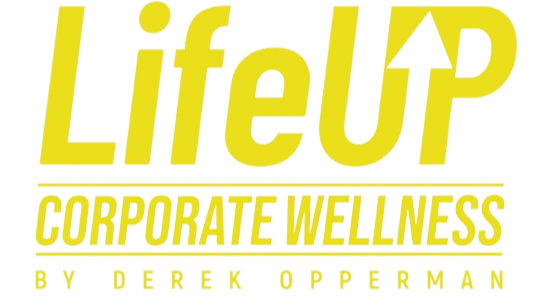
Effective corporate wellness initiatives do more than keep your employees healthy, happy, and productive.
Research has shown over and over that well-designed and developed wellness programs increase a company’s bottom line.
And frequently that success is just a matter of identifying and addressing your employees’ chronic medical conditions.
According to the Centers for Disease Control and Prevention (CDC), as many as six out of ten adults suffer from chronic medical conditions,
And, believe it or not, a whopping 86% of every medical dollar spent on sick care goes to treating these.
So how well do you know where your company stands in the chronic condition department? Here’s the first critical step toward finding out.
Get a baseline!
You need to assess the state of your employees’ current health and gauge your company’s position on seeking the best health outcomes for your workforce.
Once you understand these two items, your company can begin designing and implementing programs that will benefit both your workers and the employer.
But how do you begin to gather this information? Here are some steps you can take.
Conduct employee surveys
This may seem like a no-brainer, but you might be surprised at how many companies skip this crucial step.
You’ll want to gauge your employees’ interest in bettering their health.
Surveying the workforce will help you to weigh what good health boils down to for them and whether they’re motivated to do something about it by participating in a company-wide wellness program.
If the idea of creating a survey makes your head spin, don’t fret. There’s lots of CDC guidance on ways to begin.
Identify health risks that drive top costs
Identifying health risks will help inform you of the most important programs to implement. Begin by conducting clinical screenings and biometric assessments.
There are Health Insurance Portability and Accountability Act (HIPAA) regulations in place governing health risk assessments, so I’d advise getting legal counsel before proceeding.
But for now, to gain an overview you can consult CDC guidance on workplace wellbeing programs.
You’ll also want to review Equal Opportunity Commission (EEOC) guidance on ways employee wellbeing initiatives relate to the Americans with Disabilities Act (ADA) and the Genetic Information Nondiscrimination Act (GINA).
HIPAA will also apply when a workplace wellbeing program falls under a group health plan.
Bear in mind that although your company’s top cost driver may be cancer, it is not among the most common health risks.
And often, employees that have the highest health risks don’t even know it yet. For instance, around 20% of those with diabetes and 80% with prediabetes are blissfully unaware that they have the condition.
Many employees typically ignore milder symptoms like exhaustion and simply drag themselves through the day. People with high cholesterol don’t even get symptoms.
That’s why you can’t rely on symptoms to indicate the state of an employee’s health.
Chronic conditions may not be costing the company yet, but down the line as symptoms progress, these employee medical conditions could cost the company a LOT.
Not knowing the degree to which employees are at risk of health emergencies like a coma or heart attack could definitely impact the bottom line.
So how do you begin to assess your company’s health risks?
Take stock of current healthcare costs and ways employees utilize health plans
To get a firm grip on the overall picture and target your efforts, you’ll need to identify the most prevalent health conditions, worrisome health trends, and pore through medical and pharmaceutical claims data.
Your company’s group health insurance provider will be happy to provide this information. Also, consult this guidance on finding healthcare costs data.
Stay laser-focused on the medical conditions that your employees most frequently suffer from and that drive top costs.
(Keep in mind that obesity is a chronic health condition, but doctors may choose not to code it as a diagnosis but rather as a lifestyle issue.) Nevertheless, obesity leads to all kinds of serious health conditions, such as these listed by the CDC :
- All causes of death (mortality).
- High blood pressure (hypertension).
- High LDL cholesterol, low HDL cholesterol, or high levels of triglycerides (dyslipidemia).
- Type 2 diabetes.
- Coronary heart disease.
- Stroke.
- Gallbladder disease.
- Osteoarthritis (a breakdown of cartilage and bone within a joint).
- Sleep apnea and breathing problems.
- Many types of cancer.
- Low quality of life.
- Mental illness such as clinical depression, anxiety, and other mental disorders.
- Body pain and difficulty with physical functioning.
Because doctors frequently don’t code obesity as a diagnosis, you will need to rely on more anecdotal evidence to identify that condition.
But as you can see, to minimize health care spending it’s worth the effort!
So how do you target the most costly and prevalent health conditions and the behaviors that cause them?
- Lean into company data for health claims and biometric reports to determine your workforce’s top chronic conditions.
- Provide at-work health screenings and give employees incentives to get regular primary care checkups.
- Then zero in on promoting (and modeling) healthy habits. And reward your employees each time they establish and meet a health goal.
When you target your company’s health program dollars to your employees’ most prevalent chronic conditions, you’ll see the highest return on investment.
That’s what the Rand Wellness Program Study found in their analysis of 10-year wellness program data provided by a Fortune 100 company.
Managing chronic conditions resulted in monthly savings of $136 per employee and lowered hospital stays by a staggering 30%.
The company saved $6 per employee from incentivizing daily lifestyle behavior changes such as:
- Taking 30-minute walks
- Healthy eating
- Smoking cessation
- Stress reduction
- Curbing alcohol consumption
- And reducing waistlines to less than half of height.
Those savings didn’t even take into account reductions in absenteeism, enhanced productivity, and the savings from decreasing employee turnover.
In addition, when employees adopted the habits above, they saved as much as 50% on their own healthcare.
Final thoughts
When companies promote wellness in the workplace they can reap significant financial benefits not to mention the rewards that come with a healthy workforce. And that’s a fine thing.



